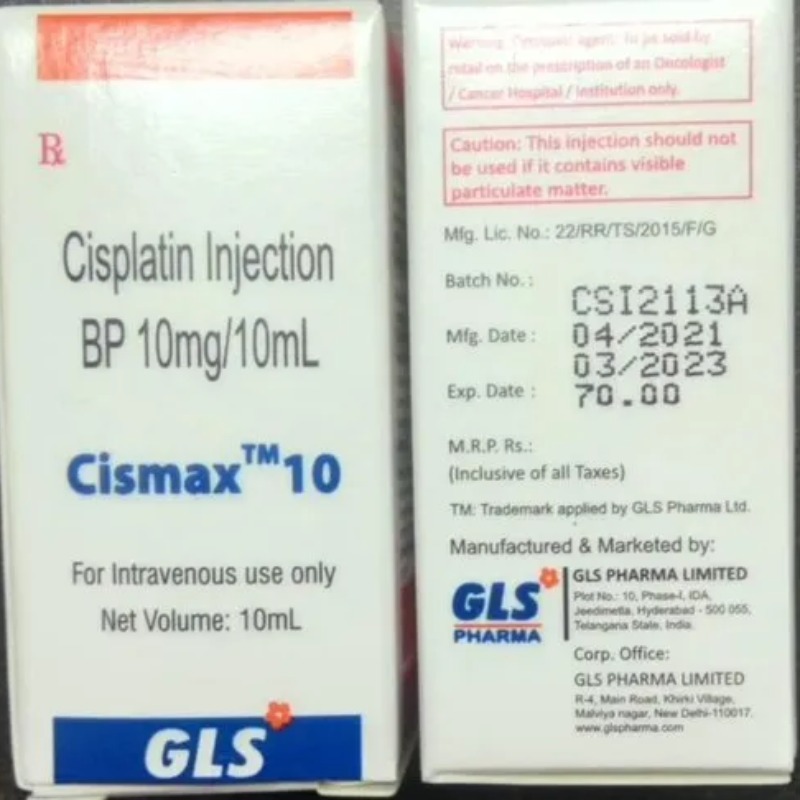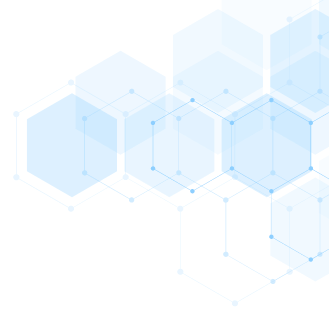DESCRIPTION
Cisplatin
Mechanism of Action
• Covalently binds to DNA with preferential binding to the N-7
position of guanine and adenine.
• Reacts with two different sites on DNA to produce cross-links, either
intrastrand (.90%) or interstrand (,5%). Formation of DNA
adducts results in inhibition of DNA synthesis and function as well
as inhibition of transcription.
• Binding to nuclear and cytoplasmic proteins may result in cytotoxic
effects.
Chemotherapeutic and Biologic Drugs 109
C Mechanism of Resistance
• Increased inactivation by thiol-containing proteins such as glutathione
and glutathione-related enzymes.
• Increased DNA repair enzyme activity (e.g., ERCC-1).
• Deficiency in mismatch repair enzymes (e.g., hMHL1, hMSH2).
• Decreased drug accumulation due to alterations in cellular transport.
Absorption
Not absorbed orally. Systemic absorption is rapid and complete after
intraperitoneal (IP) administration.
Distribution
Widely distributed to all tissues with highest concentrations in the liver
and kidneys. Less than 10% remaining in the plasma 1 hour after infusion.
Metabolism
Plasma concentrations of cisplatin decay rapidly, with a half-life of approximately
20–30 minutes following bolus administration. Within the cytoplasm
of the cell, low concentrations of chloride (4 mM) favor the aquation reaction
whereby the chloride atom is replaced by a water molecule, resulting in a
highly reactive species. Platinum clearance from plasma proceeds slowly after
the first 2 hours due to covalent binding with serum proteins, such as albumin,
transferrin, and g-globulin. Approximately 10%–40% of a given dose of
cisplatin is excreted in the urine in 24 hours, with 35%–50% being excreted
in the urine after 5 days of administration. Approximately 15% of the drug is
excreted unchanged.
Indications
1. Testicular cancer.
2. Ovarian cancer.
3. Bladder cancer.
4. Head and neck cancer.
5. Esophageal cancer.
6. Small cell and non–small cell lung cancer.
7. Non-Hodgkin’s lymphoma.
8. Trophoblastic neoplasms.
Dosage Range
1. Ovarian cancer—75 mg/m2 IV on day 1 every 21 days as part of the
cisplatin/paclitaxel regimen, and 100 mg/m2 on day 1 every 21 days
as part of the cisplatin/cyclophosphamide regimen.
2. Testicular cancer—20 mg/m2 IV on days 1–5 every 21 days as part of
the PEB regimen.
3. Non–small cell lung cancer—60–100 mg/m2 IV on day 1 every 21 days
as part of the cisplatin/etoposide or cisplatin/gemcitabine regimens.
4. Head and neck cancer—20 mg/m2/day IV continuous infusion for 4 days.
Drug Interaction 1
Phenytoin—Cisplatin decreases pharmacologic effect of phenytoin. For
this reason, phenytoin dose may need to be increased with concurrent use
with cisplatin.
Drug Interaction 2
Amifostine, mesna—The nephrotoxic effect of cisplatin is inactivated by
amifostine and mesna.
Drug Interaction 3
Aminoglycosides, amphotericin B, other nephrotoxic agents—Increased
renal toxicity with concurrent use of cisplatin and aminoglycosides, amphotericin
B, and/or other nephrotoxic agents.
Drug Interaction 4
Etoposide, methotrexate, ifosfamide, bleomycin—Cisplatin reduces the
renal clearance of etoposide, methotrexate, ifosfamide, and bleomycin,
resulting in the increased accumulation of each of these drugs.
Drug Interaction 5
Etoposide—Cisplatin may enhance the antitumor activity of etoposide.
Drug Interaction 6
Radiation therapy—Cisplatin acts as a radio sensitizing agent.
Drug Interaction 7
Paclitaxel—Cisplatin should be administered after paclitaxel when cisplatin
and paclitaxel are used in combination. This sequence prevents delayed
paclitaxel excretion and increased toxicity.
Drug Interaction 8
Aminoglycosides, furosemide—Risk of ototoxicity is increased when cisplatin
is combined with aminoglycosides and loop diuretics such as furosemide.
Toxicity 1
Nephrotoxicity. Dose-limiting toxicity in up to 35%–40% of patients.
Effects on renal function are dose-related and usually observed at 10–20 days
after therapy. Generally reversible. Electrolyte abnormalities, mainly hypomagnesemia,
hypocalcemia, and hypokalemia, are common. Hyperuricemia
rarely€occurs.
Toxicity 2
Nausea and vomiting. Two forms are observed—acute (within the first
24 hours) and delayed (.24 hours). Early form begins within 1 hour of
starting cisplatin therapy and may last for 8–12 hours. The delayed form
can present 3–5 days after drug administration.
Toxicity 3
Myelosuppression occurs in 25%–30% of patients, with WBCs, platelets,
and RBCs equally affected. Neutropenia and thrombocytopenia are more
pronounced at higher doses. Coombs-positive hemolytic anemia rarely
observed.
Toxicity 4
Neurotoxicity usually in the form of peripheral sensory neuropathy.
Paresthesia and numbness in a classic stocking-glove pattern. Tends to
occur after several cycles of therapy and risk increases with cumulative
doses. Loss of motor function, focal encephalopathy, and seizures also
observed. Neurologic effects may be irreversible.
Toxicity 5
Ototoxicity with high-frequency hearing loss and tinnitus.
Toxicity 6
Hypersensitivity reactions consisting of facial edema, wheezing, bronchospasm,
and hypotension. Usually occur within a few minutes of drug administration.
Toxicity 7
Ocular toxicity manifested as optic neuritis, papilledema, and cerebral
blindness. Altered color perception may be observed in rare cases.
Toxicity 8
Transient elevation in LFTs, mainly SGOT and serum bilirubin.
Toxicity 9
Metallic taste of foods and loss of appetite.
Toxicity 10
Vascular events, including myocardial infarction, arteritis, cerebrovascular
accidents, and thrombotic microangiopathy. Raynaud’s phenomenon has
been reported.
Toxicity 11
Azoospermia, impotence, and sterility.
Toxicity 12
Alopecia.
Toxicity 13
Syndrome of inappropriate antidiuretic hormone secretion (SIADH).
SPECIFICATION


Login To Comment